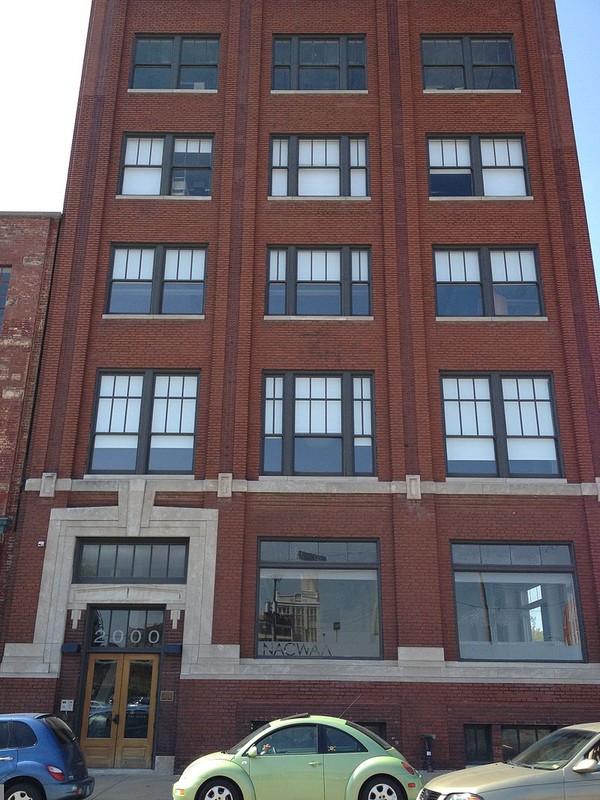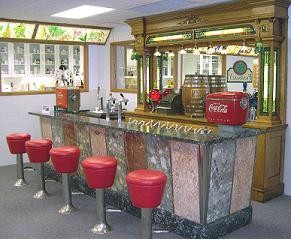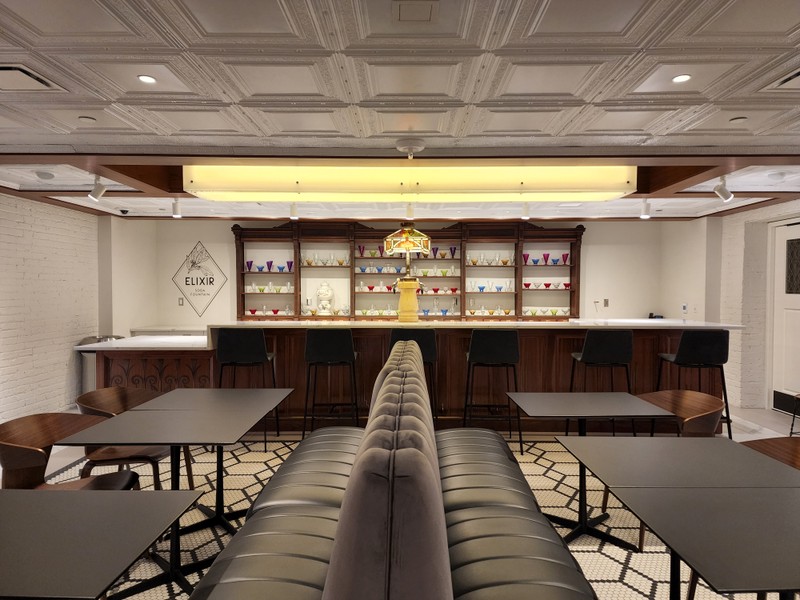Liquid Carbonic Company Building
Introduction
Text-to-speech Audio
Constructed in 1913, this historic building in Kansas City's Crossroads District was home to soda fountain manufacturer Liquid Carbonic Company until 1935. The six-story reinforced concrete building has a red brick veneer and served as the Kansas City branch office for the soda fountain manufacturer, offering a showroom, space for light manufacturing and warehouse space, as well as offices for regional salesmen. The company was founded by Jacob Baur, known as "the father of the soda fountain," and was one of about half a dozen providers of soda fountains in Kansas City and operated here until 1935 when the company moved to another location. Over the years, the building has held a variety of offices and businesses, including the Patricia Stevens Model & Talent Agency. In 2007, Charles Barnard purchased the building for two million dollars and began the process of restoration and repurposing the building which has been listed on the National Register of Historic Places since 1994. The first floor is home to the Helzberg Entrepreneurial Mentoring Program, a nonprofit established by Barnett Helzberg, Jr.in 1995. The top floor is a loft condominium while the remaining floors are home to a variety of businesses including Foot Traffic, a company owned by Barnard that specializes in making novelty socks.
Images

This complete soda fountain was manufactured by the Liquid Carbonic Company in 1928 and can be viewed at Village Drug in St. Peter, Minnesota.

This historic soda fountain can be found in the basement of the Kansas City Museum-more information and a virtual tour of the museum are in the links below

Backstory and Context
Text-to-speech Audio
Jacob Bauer was the son of an Indiana pharmacist and followed his late father into the trade by operating a drug store with one of his brothers. Jacob's early work includes a variety of tonics that were consumed at the end of a hard day's work promising rejuvination through natural ingredients sourced from around the world. The chemist also produced creams and lotions, including the bestselling "Baur's Lettuce Lotion" which was marketed as a beauty product. In the 1880s, Bauer worked on the process of liquefying carbon dioxide with the goal of being able to better produce soda for his tonics by distributing the gas under pressure in cylinders, an innovation that promised to make the process of producing soda as simple as opening a cylinder to release the gas into a liquid. Eight of Baur's family members and acquaintances recognized the potential of Baur's work and in 1888, they created the Liquid Carbonic Acid Manufacturing Company. The following year, the company sold Bauer's cylinders and the equipment needed to produce soda water simply by opening a valve to release carbon dioxide gas from the company's Red Diamond branded cylinders.
Once drug store operators recognized the time they could save and the benefits of producing soda water and other carbonated products on demand, the company grew quickly and by 1893 Baur was able to demonstrate his invention at the 1893 World's Fair in Chicago. Bauer marketed his inventions as a way to quickly produce soda and mineral waters along with other uses that included producing "bottled drinks, wines and champagne … and for carbonating beer in breweries.” Bauer won a medal at the Exposition, but the real prize was a contract prior to the event to supply carbon dioxide for concessions at the World's Fair. With visitors from all around the globe enjoying refreshments from the one thousand soda fountains Baur's company sold to the Fair, the company combined their largest single order to date with a perfect mechanism to market their soda fountains to investors and customers.
The Liquid Carbonic Company, as the company was known after 1903, built manufacturing and distribution plants all over the country in the next two decades, including the construction of this Kansas City building in 1913.In 1909, the company produced a single unit that combined all of the processes needed to produce up to twenty gallons of carbonated water in a single day. Capitalizing on the economic benefits of such a machine that would increase a drugstore's business, the machine was called the “Liquid-Diamond” Carbonator. The company also offered a variety of elaborate soda fountains that came complete with the equipment needed to produce sodas along with counters and stools for thirsty patrons.
Sources
Department of the Interior. Liquid Carbonic Company Building, National Register of Historic Places Continuation Sheet. April 29th, 1994. Accessed August 28th, 2022.
McCormick, Mike. "Jacob Baur still recognized as ‘Father of the Soda Fountain’." (Terre Haute) July 3rd, 2010. .
The Liquid Carbonic Company, Soderland Drugstore Museum. Accessed August 28th, 2022. https://www.drugstoremuseum.com/soda-fountain/liquid-carbonic-co/.
2000 Baltimore Historic Building Restoration and Redevelopment, Scott Associates. Accessed August 28th, 2022. https://www.scottassociateskc.com/2000-baltimore.
https://en.wikipedia.org/wiki/Liquid_Carbonic_Company_Building#/media/File:Liquid_Carbonic_Company_Building_in_Kansas_City,_MO.JPG
https://www.drugstoremuseum.com/soda-fountain/liquid-carbonic-co/
https://theclio.com/entry/147125
